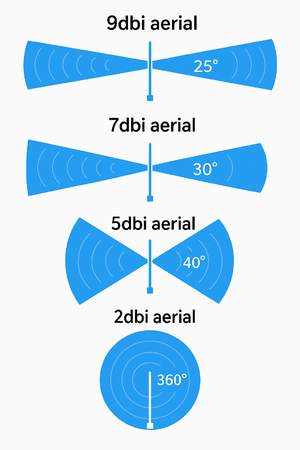LoRA
More actions
A number of space users are experimenting with LoRA. LoRa is different to LoRaWAN
Introduction
LoRa
LoRa (Long Range) is a wireless modulation technique designed for low-power, long-distance communication, ideal for sending small packets of data in environments where range and battery life are more important than bandwidth. While LoRaWAN builds on this by adding a network protocol and backend infrastructure to manage communication between devices and gateways, many users—especially in space, remote sensing, or private mesh networks—use LoRa independently of LoRaWAN.
In the UK, LoRa operates licence-free in the 868 MHz ISM (Industrial, Scientific and Medical) band, provided transmissions follow specific regulations: they must be low power (typically up to 14 dBm / 25 mW), duty-cycle limited, and unencrypted use is permitted—but encryption is commonly used for privacy and security. This makes it attractive for secure, battery-powered devices that need to communicate over several kilometres.
However, if you hold an amateur radio (ham) licence, you can transmit at much higher power levels on frequencies near 868 MHz—such as the 433 MHz band, which is widely used by radio amateurs. The key limitation is that encryption is not allowed under ham radio rules, and all transmissions must be identifiable and open. This means that while ham radio LoRa nodes can achieve longer range, they cannot interoperate with encrypted, licence-free LoRa networks, making them incompatible for most general-purpose LoRa applications that require privacy and standardisation.
Equipment Used
Among space users, the two most widely used LoRa modules are the Heltec Wireless Stick V3 and the RAK4632.
Heltec Wireless Stick V3
The Heltec V3 is a development board that combines an ESP32 microcontroller with built-in Wi-Fi and Bluetooth, alongside a LoRa transceiver. It is ideal for prototyping and data-rich applications where Wi-Fi is needed for bridging data to the internet or for configuration via a web interface. However, the power consumption is significantly higher, especially when Wi-Fi is active. This makes the Heltec V3 less suited to long-term solar or battery-powered nodes, unless power-saving modes are carefully implemented.
RAK4632
The RAK4632 is a compact, low-power LoRa module based on the nRF52840 microcontroller, offering excellent energy efficiency. It does not have built-in Wi-Fi or Bluetooth, but its ultra-low power draw makes it well-suited to solar-powered or long-life battery installations. It is particularly popular for fixed-location nodes, environmental sensors, or relay devices where infrequent data transmission and minimal overhead are important.
In summary, Heltec V3 is better for development and hybrid connectivity, while the RAK4632 excels in efficient, solar-friendly deployments. Understanding their trade-offs helps space users build networks that are both effective and sustainable.
LilyGO T-Deck (portable)
Another device gaining popularity among space users is the LilyGO T-Deck. This is a powerful and versatile development board that combines an ESP32-S3 microcontroller with an integrated keyboard and display, alongside LoRa support. It essentially functions as a compact, all-in-one handheld terminal—making it ideal for portable control interfaces, field configuration tools, or mobile communication nodes within a LoRa-based mesh.
The T-Deck includes USB-C charging, a battery connector, SD card slot, and supports features like USB host mode, which further expands its potential. It also has built-in Wi-Fi and Bluetooth, similar to the Heltec V3, so it consumes more power than a bare LoRa node. However, its integrated screen and keyboard make it especially useful for direct interaction with nodes, on-site diagnostics, or running custom applications without the need for a laptop or phone.
While not optimised for ultra-low power use, the LilyGO T-Deck is valued for its functionality and portability, making it an excellent companion device for fieldwork or development within experimental LoRa networks.

Aerials
A critical aspect of LoRa performance is the antenna, which directly affects range, signal quality, and reliability. While many LoRa modules—including the Heltec V3, RAK4632, and LilyGO T-Deck—ship with stock antennas, these are often poorly tuned and offer very low gain, sometimes performing significantly worse than expected.
The effectiveness of an antenna is often measured in dBi, or decibels relative to an isotropic radiator. This unit describes how well an antenna focuses radio energy in a particular direction. A higher dBi value typically means the antenna is more directional and efficient, concentrating energy horizontally rather than wasting it upward or downward. For example, a 2 dBi antenna radiates in a more spherical pattern (good for close-range, omni-directional coverage), while a 5–8 dBi antenna sends more of its signal out along the horizon—ideal for long-range point-to-point setups.
Many of the antennas bundled with LoRa boards are cheap stubby monopoles with low gain and inconsistent performance. In some cases, they're not even properly tuned for 868 MHz, leading to poor signal transmission and reception. Upgrading to a properly tuned 868 MHz antenna—ideally with known gain characteristics and tested SWR (standing wave ratio)—can dramatically improve performance.
High gain does not require more transmission power, it just provides better range.
